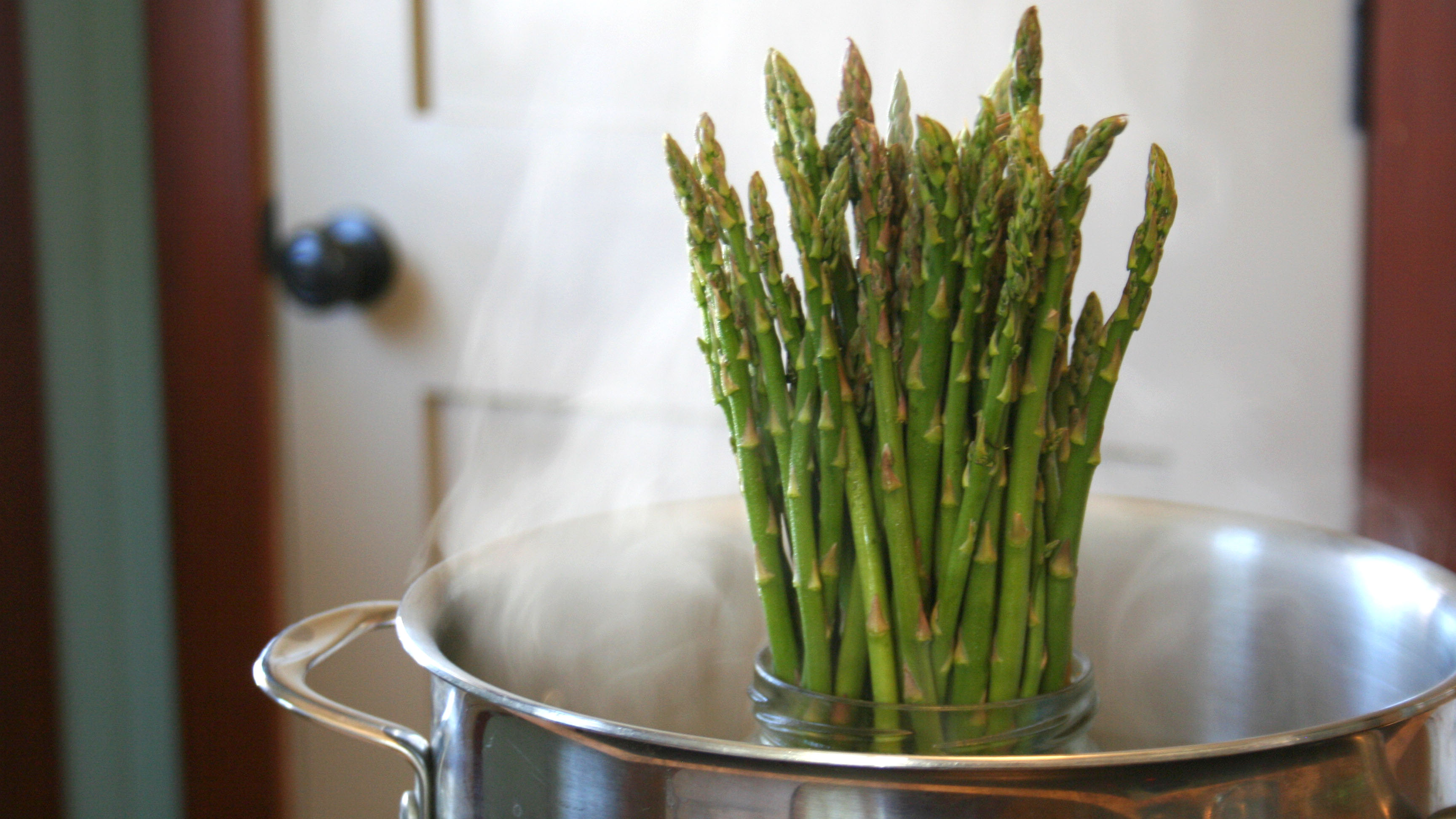The Best Method For Cooking Asparagus Is 2,000 Years Old
I used to think I didn't like asparagus, but it turned out to be—as these aversions often are—a textural problem. Their stalks would remain fibrous and tough even as half the stalk and the tips turned to mush. My mind was changed a few years ago when some restaurant dish I ordered came with a salad of pleasantly al dente asparagus, the tips tender but not mushy.
At home, I tried blanching the stalks, grilling them, baking them, but nothing recreated that texture—until I learned of a combination boiling-steaming method involving a mason jar and very little kitchen skill. The technique came to my attention via Ari LeVaux's cooking column in my local newspaper Missoulian. (Strange coincidence: When my boyfriend and I visited Missoula to decide whether we wanted to move here, we stayed in LeVaux's AirBnb, not knowing we had the food-writing beat in common. He had a solid-looking backyard garden.)
Anyway, LeVaux recommends a method for cooking asparagus that he gleaned from the translation of an ancient Latin cookbook compiled in the first century A.D. Known as Apicius, it's a tome that's inspired cooks for centuries all the way until the present-day. But though it's often called "the world's oldest cookbook," the Apicius collection is not really a cookbook in the modern sense. Its instructions are more guidelines than recipes, lacking precise measurements and of course, baffling modern readers with lost-in-translation Latin terms.

It's a good thing LeVaux did the asparagus research for me, scrounging up a mid-1930s translation that helped illuminate this ancient cooking method. Basically, it recommends cooking the asparagus in boiling water "rursum," which is translated to mean "backwards." Apicius' instructions call for a bunch of asparagus to be stood stalk-side down in boiling water that doesn't reach all the way up the stalk. This way, the boiling water tenderizes the thicker stalks while steam merely tenderizes the tips. No mushy tips, no tough stalks.
To recreate this, I placed a bunch of asparagus—I cut about 1/4-inch off the bottom—in a dry pickle jar. (You could use a mason jar, but a pickle jar is slightly fatter.) I boiled a few inches of water in a large stock pot, then carefully placed the jar in the pot. The water bubbled about halfway up the jar while the steam swirled around the tips. After 25 minutes, I removed the jar. Now, I know what you're thinking: 25 minutes?! For asparagus?! But it's a passive 25 minutes—I started cooking something else while this was happening—and it's worth it to nail the perfect texture for both tips and stems.
Success! The stalks were the same texture as the tips—tender but not mushy. Levaux added cream, butter, and garlic into his jar to infuse some flavor into the asparagus, but I left mine plain since they were destined for this sweet-tart balsamic, asparagus, and pecan salad.
Now that I know of the Apicius method for cooking asparagus, I'll never go back to my failed grilling or blanching or sautéing. If someone could solve my next kitchen conundrum—how to devein shrimp in under two hours and without being bored to tears—I'm ready for it.
